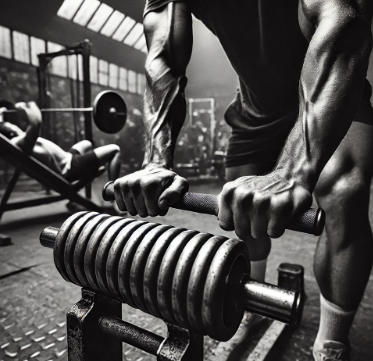How to Grow Forearm Muscles
Published By GainzTracker, 29th September 2024

Understanding Forearm Muscle Growth
Introduction
Building strong and well-developed forearms is often an overlooked part of many training routines, yet it plays a crucial role in overall strength, grip, and functionality. Whether you're lifting weights, engaging in sports, or performing daily activities, having stronger forearms can significantly enhance your performance. In this article, we will explore the essential principles and exercises for growing your forearm muscles efectively.
What is Forearm Muscle Growth
Forearm muscle growth primarily occurs when you consistently engage in exercises that target the muscles of the forearms, namely the flexors, extensors, and brachioradialis. To maximize forearm muscle developement, it’s essential to focus on progressive overload, grip variations, and isolating the forearm muscles. Some key aspects of forearm training include:
- Progressive Overload: Continuously increasing the weight or intensity of your exercises ensures that your forearm muscles are challenged, leading to growth over time.
- Grip Strength: Focusing on exercises that enhance your grip strength will not only improve your forearm size but also benefit your overall lifting performance.
- Wrist and Finger Movements: Incorporating movements that isolate the wrists and fingers is key to fully developing your forearm muscles.
- High Repetition Range: Forearms often respond well to higher repetitions due to their endurance-based muscle fibers, so incorporating 12-20 reps per set is efective.
Benefits of Training Your Forearms
- Improved Grip Strength: Strong forearms directly contribute to a better grip, which is essential for exercises like deadlifts, pull-ups, and rows.
- Balanced Aesthetic: Well-developed forearms enhance the overall appearance of your arms, creating a more balanced and powerful look.
- Injury Prevention: Strengthening the forearms can reduce the risk of wrist and elbow injuries, particularly for those who perform repetitive tasks or lift heavy weights.
- Functional Strength: Stronger forearms improve your ability to perform daily tasks, such as carrying heavy objects or opening jars, with ease.
Effective Forearm Exercises
Here’s a breakdown of some of the most effective exercises for growing your forearm muscles:
Wrist Curls
- Barbell Wrist Curls – 3-4 sets of 12-20 reps
- Dumbbell Wrist Curls – 3-4 sets of 12-20 reps
Reverse Curls
- EZ Bar Reverse Curls – 3-4 sets of 10-15 reps
- Dumbbell Reverse Curls – 3-4 sets of 10-15 reps
Grip Training
- Farmer’s Walk – 3 sets, walk for 30-60 seconds
- Plate Pinch – 3 sets of 30-60 seconds hold
Forearm Extensors
- Reverse Wrist Curls – 3-4 sets of 12-20 reps
- Behind-the-Back Barbell Wrist Curls – 3 sets of 12-20 reps
Key Takeaways
Training your forearms is essential not only for aesthetics but also for functional strength and injury prevention. By focusing on grip strength, progressive overload, and a mix of exercises that target both the flexor and extensor muscles, you can efectively grow your forearms. Be sure to incorporate these exercises into your routine with high repetitions and proper form to maximize results.
Next Steps
Ready to enhance your forearm training? Start by incorporating a few forearm-specific exercises into your workout routine, such as wrist curls and reverse curls. Track your progress, increase the weight gradually, and stay consistent. With dedication and proper training, you'll start seeing noticeable improvements in your forearm size and strength.
Disclaimer: The information provided in this article is for educational purposes only and is not intended as a substitute for professional medical advice, diagnosis, or treatment. Always consult with a healthcare provider before beginning any exercise program. Use caution when performing exercises to avoid injury.